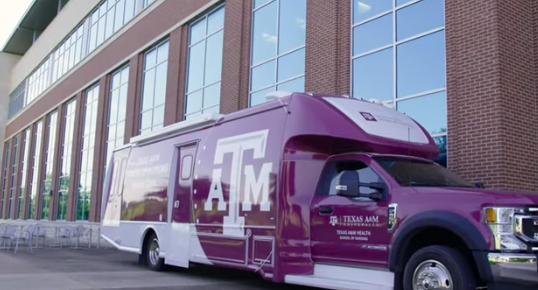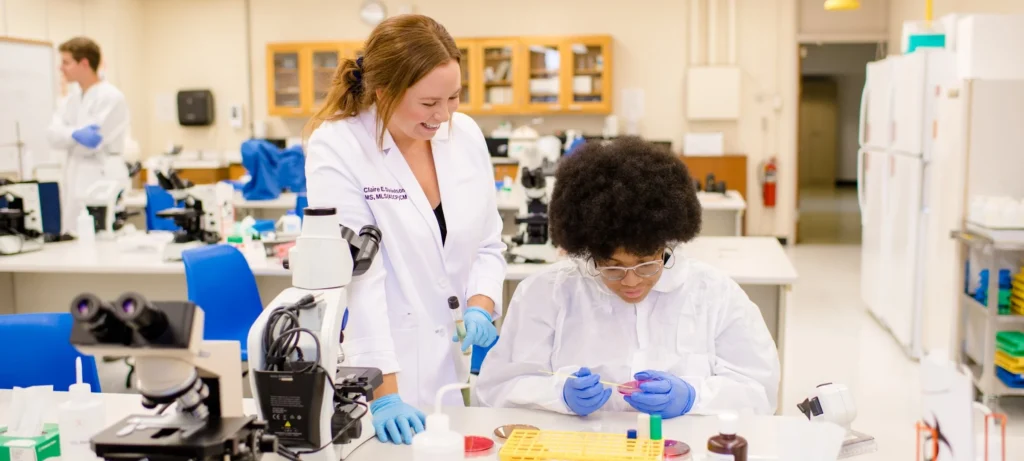The Heartbeat of Care in the Lone Star State Texas Health
The name Texas Health might be taken up by people and one might immediately associate this with a hospital chain but the term denotes way beyond being an association of medical facilities. Texas Health is representative of the consistent interests of the state towards wellness, prevention, and innovative care to its 30 million plus inhabitants.
The economy, the culture, and the lives of families in Texas are informed by the health of the Texan people, as they run across the wide open ranchlands of West Texas, to the bustling metropolitan areas of Dallas and Houston. Being a long-time resident or even a person, who is going to relocate to the Lone Star State, Texas Health will provide you with the better understanding of the opportunities and challenges in the area. In this blog we explore:
Table of Contents
- Knowing Texas Health and Its Mission.
- Within the Texas Landscape of Healthcare.
- Significant Health Problems of the Texas residents.
- Innovation and Technology Moving into the Future.
- Wellness and Prevention in the Community.
- Policy Economics and Social Determinants.
- Preparations for the Future of Education Workforce.
Health in Texas is not just about hospitals and clinics. It involves the collaboration of communities in overcoming chronic illnesses, access obstacles, and increased demand of mental health services. It is concerning associations between the government and non-government and the decision-making power of individuals to take decisions that result in extended and healthy lives.
History of the Texas Health Resources Briefly
Texas Health Resources is a nonprofit faith based health system based in the United States which is one of the largest. History reveals how indigenous focus and targeted expansion led to the development of a reputable leader in healthcare.
Key milestones include:
- Community Roots – The system started while being a group of community hospitals constructed by the local leaders who desired to practice care near home.
- The merger in 1997– a number of these hospitals officially merged to form Texas Health Resources, which had a single mission which was to enhance the health of individuals in the communities that it serves.
- Growing Network – The organization currently has dozens of hospitals, outpatient centers, and wellness clinics throughout North Texas, both founded on the headquarters based in Arlington.
- Reliable Facilities – The network is comprised of well-respected names as Texas Health Presbyterian Hospital Dallas, Texas Health Harris Methodist Fort Worth and Texas Health Arlington Memorial Hospital.
A size of Texas Health is not the only element that makes it stand out of the crowd, as well as its dedication to the patient centered care. The system is led by a faith inspired mission which is concerned with the whole person mind body and spirit, investing in improved medical technology, community outreach activities and wellness education. Through the fusion of science and compassion, Texas Health has had a consistent partner in the quest of millions of Texans in search of high quality care.
The Texas Healthcare Landscape at the Moment
The state of Texas is a diverse state in terms of healthcare. In world-renowned medical research facilities in Houston, as well as the clinics of the most distant communities, Texas has a very diverse range of care. The state boasts of the best hospitals in the country, one of them being the largest medical complex in the world, the Texas Medical Center in Houston. This center of innovations has been drawing physicians, researchers, and patients worldwide.
Cities like Dallas Fort Worth, Austin, San Antonio have access to the state of the art treatments and specialty services. In such cities, advanced cancer treatment, heart surgery programs and full maternity services are available to the residents. In other places, the smaller towns and countryside areas are usually dependent on the regional hospitals and mobile health care facilities to access basic health needs.
Although Texas has strong points, it has special issues with healthcare provision. The size of the state poses logistical challenges when responding to an emergency or providing routine care. Medical facilities may be too far apart and this may make them inaccessible to the family people in distant locations. To overcome such deficits, Texas still spends funds on telemedicine, mobile clinics, and community outreach programs that bring services to the people who require them.

Major Health Issues in Texas
Despite good medical centers, Texas struggles with a number of urgent health issues that touch upon millions of its residents. It is paramount to comprehend these concerns to enhance the output and strategize in case of future.
Major challenges include:
- Rural Access to Care– In most of the rural counties, there are difficulties in sustaining hospitals and medical personnel, resulting in an increased travel distance by the population to access simple services.
- High Uninsured Residency – Texas has always ranked among the states with the highest number of uninsured in the nation and consequently, families are unable to afford preventive care.
- Chronic Diseases – Diabetes, heart disease, obesity and other related conditions are still prevalent in places where healthy food and physical activities are scarce.
- Mental Health Needs – Mental health-related services have been in increasing demand, and most communities do not have the necessary professionals and treatment centers.
- Public Health Emergencies – pandemics, floods, and hurricanes are unexpected bursts of demand in healthcare, which puts strain on his hospitals and emergency systems.
The government agencies, the private health systems and the local communities need to work together in order to address these challenges. Such solutions as increased choice of insurance, community education programs and preventive care programs, trying to decrease chronic disease, are being worked on by Texas Health Resources and other organizations.
Technology in Texas Health and Innovative Solution
One of the hottest factors that are driving the future of healthcare in Texas is innovation. The new technologies being implemented in the state hospitals, clinics, and research centers are enhancing the patient care, lowering the costs and increasing accessibility.
Telemedicine has turned out as a game changer to both the urban and the rural societies. Video sessions allow patients to interact with the doctor saving them on traveling time and providing faster medication to them on common illnesses. This strategy turned out to be critical during the COVID 19 pandemic and it is gaining momentum.
The Texas Health Resources hospitals have greatly invested in electronic health records, high imaging technologies, and robotic surgery devices. The technologies assist physicians in diagnosing illnesses at an earlier stage and conducting surgery more accurately. Artificial intelligence is also introduced to identify risks in the patient and prescribe individual treatment plans.
Medical research is concentrated in Texas with universities and privately owned firms striving to develop state of the art therapies. The city of Houston, Dallas and Austin already have research centers that are starting to make breakthroughs in the area of gene editing, cancer treatment and the use of wearable health devices. Such innovations not only impact the people of Texas positively, but also have an impact on practice in the healthcare sector in the country.

Preventive Care and Wellness Programs in the Community
Although technology spurs development within hospitals, community wellness activities are very important in ensuring that people remain healthy even before they are taken to hospitals. Programs to teach residents healthy habits, prevent diseases, and educate people about them are implemented in Texas Health Resources and numerous local organizations.
Some of the important community programs are:
- Health Screenings – Free or low cost blood pressure, diabetes and cholesterol screenings assist the residents in identifying the issues at an early stage.
- Nutrition and Fitness Programs – Wellness centers in the area provide cooking, exercise and weight management classes to fight obesity, combined with associated diseases.
- Maternal and Child Health Services – The purpose of prenatal education, breastfeeding support and programs to vaccinate children against diseases at childhood stage is to provide families with a good beginning.
- Faith and Community Partnerships– churches and neighborhood groups collaborate with healthcare providers to disseminate information on disease prevention and available resources.
- Mobile Clinics– It involves traveling medical vans that provide vaccinations, dental services, and checkups to underserved communities that lack permanent medical facilities.
Through these programs, the healthcare system of Texas Health is seen to not only be concerned with treatment of sickness but also with environments in which individuals are able to prosper. Texas Health achieves by preventing and educating to decrease long term expenditures and enhance quality of life in the state.
The Texas Healthcare Policy and Government Role
In Texas, the public policy influences almost every sphere of healthcare. State leaders define the manner of administration of the Medicaid, funding of hospitals and the provision of support to health programs. Local governments are also involved in the establishment of health departments, operating of publicly run clinics and in the planning of emergency response networks.
Medicaid expansion is one of the significant policy issues in Texas. The federal government is providing funds that states can use to increase the number of low income residents that can access Medicaid but Texas has opted not to do so deal with full force. The proponents of expansion say that it will decrease the figures of uninsured citizens and inject billions of federal monies into the state. Critics have reservations on the cost in the long run and reliance on the government.
The workforce regulations associated with healthcare are also problematic in Texas. The speed of the commencement of the practice of new doctors, nurses and mental health professionals are influenced by the requirements of the licensing and funding decisions. Simplification of licensing and increase in training programs are being used to alleviate the shortages particularly in rural localities.
In cases of general public health emergencies like hurricanes, pandemics, etc, state agencies work with hospitals and governments to provide emergency care and allocate resources. These experiences underscore the need to have powerful policy planning in order to cushion the residents during unforeseen situations.

Health Services Economic Impact in Texas
Healthcare is a service, but it is also a booster to the Texas economy. The hospitals, clinics and medical research facilities generate thousands of jobs, attract investment and billions of dollars in annual revenues.
Major economic contributions are:
- Employment Opportunities – Healthcare is among the biggest employment industries in Texas that offer jobs to doctors, nurses, staff technicians and support staff in both urban and country settings.
- Medical Research and Innovation – Medical research centers in Houston, Dallas and Austin attract grants and individual funding which not only spurred local economies but also led to the development of medical research.
- Business Growth – Quality healthcare system will also bring in new businesses and employees who appreciate access to high-quality care. Firms tend to put into consideration provision of health care in determining the location of operations.
- Health Tourism – The other states and countries send their patients to Texas to obtain specialized services in the well-known health facilities such as Texas Medical Center, which promotes the hospitality and service sectors.
- Education and Training – Medical colleges and nursing courses are not only generating skilled workers but also developing the local expenditures and growth.
With health infrastructure and innovation, Texas will have a healthy population and a prosperous economy. The hospital, technologic, and workforce investments do not only help individuals in hospitals but also companies and the rest of the state.
Health Disparities and Social Determinants of Texas
Even with the amazing achievements in the medical field, inequality in care access is still present among most Texans. Income, education, race and geographical location are some of the factors that determine health disparity. These social determinants of health are able to affect every aspect of life such as life expectancy to the chances of contracting chronic diseases.
Rural county residents are usually the ones that get the most challenges. The fact that there are limited hospitals and healthcare professionals implies that there will be a much longer travelling time to obtain even simple services. Low income neighborhoods in urban settings might not have grocery stores or safe areas to exercise, which will lead to increased obesity and diabetes.
Other important social determinants would include:
- Income and Insurance Coverage – Familes with low income have higher chances of not having insurance, and preventive care and frequent checkups become more expensive.
- Education – Less-educated people might also not have much access to health information which limits their power to make appropriate decisions.
- Housing and Environment – Low quality housing, air quality and unsafe neighborhoods increase the likelihood of morbidity and mortality.
- Language and Cultural Barriers– The non English speaking residents do not know how to use the healthcare system or facilitate treatment plans.
To overcome these disparities, it is important to work together. The community organizations, local governments, and health care providers are collaborating to increase access to insurance and conduct health education and aid in providing safer living conditions.
Testimonies of Better Community Health
Nevertheless, there is a lot of inspirational stories around Texas about the communities that are making tangible progress in health outcomes. These tales demonstrate that organized efforts and local dedication can make a permanent change.
The community leaders initiated a massive campaign to alleviate childhood obesity in Dallas. With integrating school based nutrition programs, bettering of the public parks, and free fitness classes, the city has managed to lower the rates of obesity in school children gradually.
Houston has adopted community health clinics where people get free screening and education on health. The clinics have assisted in the early detection of hypertension and diabetes enabling the residents to be treated before the occurrence of complications.
Telemedicine programs in West Texas have changed the treatment in remote communities. Instead of making long trips to large cities, patients now have a virtual meeting with specialists in the field of cardiology, dermatology, and mental health.
These positive examples show that a step can be made in the right direction when the healthcare systems collaborate with local organizations and residents. They also offer good examples on other communities in need of overcoming the same problems.
The Texas Healthcare Role of Education and Workforce Development
Healthcare is a strong system which relies on well trained workforce. Texas medical schools, nursing colleges, and technical colleges are striving to create the future generation of doctors, nurses, and other allied health professionals. Human resource in healthcare is on demand because the population in the state is increasing and older.
Some of the best medical institutions in Texas are the University of Texas Southwestern Medical Center, Baylor College of Medicine and the University of Texas Medical Branch. Such schools draw the best talent and do cutting edge research on the same as they train the future clinicians. Community colleges are also very essential as they provide nursing degrees, technician certifications and continuing education to the existing workers.
Workforce development focuses on key areas which include:
- Nursing Shortages – Texas has been experiencing high demand level of registered nurse, and schools have been increasing their enrolment programs and developing accelerated courses.
- Rural Training Programs – Special programs motivate students to train and eventually work in rural areas that do not have sufficient medical personnel.
- Continuing Education – Online programs and professional developmental seminars assist the workforce that is already in the field remain abreast of the current medical innovations.
- Diversity and Inclusion – Programs will focus on recruiting students with underrepresented backgrounds to have a more representative population of the state.
Education should be invested in to make sure that the population of Texas has access to qualified health specialists. It also opens employment opportunities to the residents, which makes the health system as well as the economy stronger.

The Future of Texas Health Future Trends and Predictions
The healthcare sector in Texas is set to have a bright future as technologies, policy, and community requirements keep on changing. Knowledge of these trends can enable residents, providers, and policymakers to be ready in the next ten years.
There are some major trends that are likely to influence Texas Health:
- Telehealth Expansion – Virtual care will become even safer, which will enhance access to rural residents and busy families.
- Personalized Medicine – The development of genetics and data analytics will enable physicians to create medication that is tailored to an individual biology.
- Value Based Care – Hospitals and clinics will be more oriented towards patient outcomes instead of the quantity of services delivered, and they will reward quality instead of quantity.
- Preventive Health Initiatives – More focus will be on lifestyle interventions, early diagnosis, and wellness measures that will ease the burden of chronic disease.
- Climate and Public Health – Texas will be prepared to work on the challenges of extreme weather events to make sure there is an avenue to react to the occurrence of hurricanes, heat waves and floods, so that healthcare systems are resolute.
The trends indicate that in the future, healthcare is more accessible, personal, and more concerned with ensuring people stay healthy and not merely treating them of their illness. Texans can expect to have a mix of innovation and compassion in its system.
Texas Health Comprehensive Summary
Texas Health is not just a chain of hospitals. This is one of the approaches to creating a healthier future of over 30 million citizens through the combined efforts of medical workers, educators, political leaders and community members. Each element of the system is important, be it the new research laboratories in Houston or the mobile clinics in the remote Texas towns.
Through this blog we have gotten to know the various dimensions that provide Texas Health its distinctiveness. We analyzed the history of Texas Health Resources and patient centered mission. We have learned about the current healthcare context, rural healthcare challenges, and chronicity of the disease. We discussed the power of innovation, the significance of community wellness programs, and the role of the state policy. We have also focused on economic contribution, education and workforce building as well as motivation of success stories across the state.
A collection of these factors proves that Texas Health is not only a service but a living system that develops and changes as people are served. It is developed on the basis of the partnerships, education, and the belief in equity in order that all Texans, irrespective of their income and residence location, should live healthier lives.
Summary and Audience Response
The Texas Health is an account of invention and strength. It is the personification of the soul of a conservative and innovative state simultaneously. The hospitals and research centers test the frontiers of science and it is through the community programs that we are reminded that the key to wellness continues to be such things as regular exercise and balanced meals.
Among the issues, which the residents, policymakers, and healthcare professionals will be required to grapple with in the state of Texas, growing access, cost containment, and social determinant of health are likely to continue to be part of the progress that the state will witness. Nevertheless, it is a nice place to begin in future with the groundwork that has been laid by the Texas Health Resources and the hundreds of local organizations.
Your time has come now to make your contribution to the discussion.
What in your opinion can be done to improve the health of communities in Texas within the next decade?
Provide your opinions, experiences or suggestions. Your opinion may lead to new thoughts and help to make the Texas healthier and could be utilized in the future by your generations.
More Blogs
